“Shit. Look at that Simon, it was all shit.” David Asseraf is scrolling through his WhatsApp messages, showing me various deliveries of clothing.
“This one they said it was all dungarees – US-made, 300 pieces – but they turned out to be dresses.” The founder of Broadway & Sons in Sweden, David always films himself opening a delivery so he has evidence of what arrived. This video shows a bale that’s opened with a knife, and then a dozen denim dresses laid out on the floor.
“When I told him I was going to send them back, he said, ‘No don’t do that, it will cost me too much. Just get rid of them,’” says David. “In the end I just kept the buckles – the hardware – because those are valuable.”
I’m sitting outside the Stockholm branch of Broadway & Sons with David, on a stunningly sunny afternoon. Not the kind of thing that, apparently, is that common in Stockholm.
David (below) is gregarious, smiling at everyone, in fact the kind of person that gets easily distracted as people walk by that he knows – the chef from the local restaurant, a regular customer.
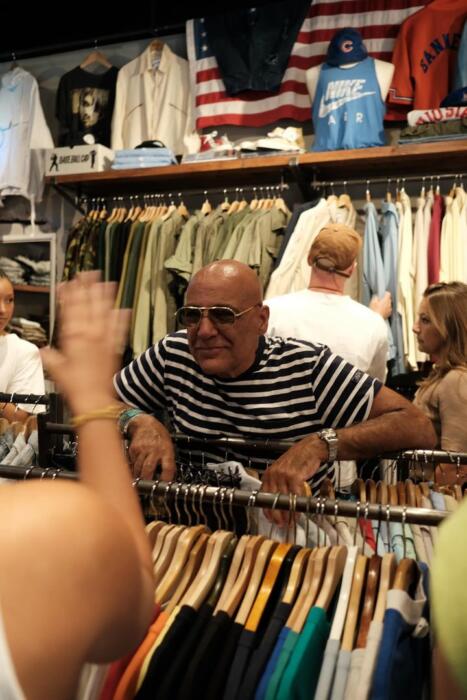
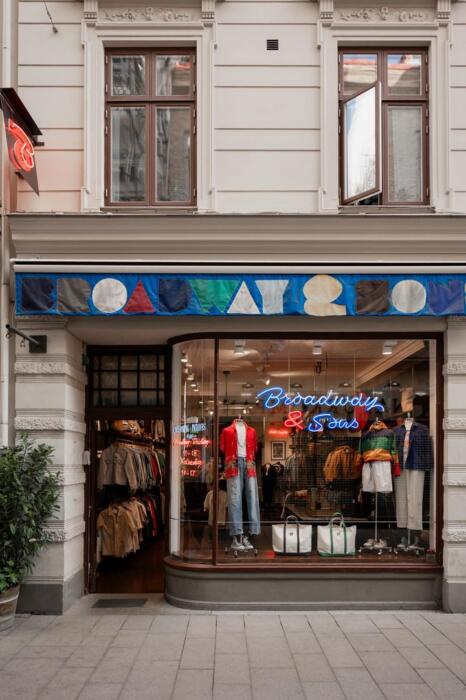
I’m lucky to have caught him actually – David and his eldest son Nathaniel live in Gothenburg, which is where Broadway is headquartered (above). His younger son Noam (below) runs the new Stockholm branch.
“When they wanted to open here, I said only if we can get a corner shop, with big windows, with a certain amount of space,” says David. “We had to wait a while and pay a lot in the end because a restaurant wanting it too, but we got it.”
He points to a side street across the road. “Look over there and see how many people walk past that shop, compared to how many people walk past this one. It’s crazy, the difference. Even being on the sunny side of the street makes a difference – in Sweden if it’s a sunny day you walk on the sunny side!”
I ask if he’s learnt this the hard way. There is an emphatic nod. “I’ve made that mistake before – taking somewhere that was available that wasn’t quite right. You pay for it forever.”
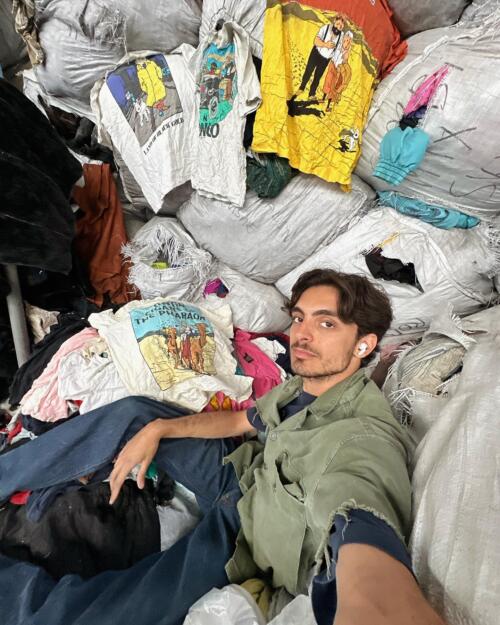

I wanted to interview David while I was in Stockholm for precisely this kind of perspective. Yes, Broadway is one of the best vintage shops in Europe – the kind of place I’ve spent too long scrolling through the website, at home or on the train. I wanted to see it and shop in person.
But also, it always gives you perspective when you speak to someone that’s done a thing you love for a long time – whether that’s selling vintage or making suits. “I started out selling paintings from the back of a camper van in the sixties, one of those old Volkswagen ones,” he says. “Then it was denim – denim and western gear became huge in the seventies. So I had a shop that only sold denim, and we got most of it from Paris.”
These fashions come around: Nathaniel will tell me later that western clothing is the biggest category right now for him in Gothenburg. But something that’s changed permanently is the supply of clothing. “Vintage has become fashionable now, but few people have the same network as us for sourcing,” says David.
Plunging back into his messages, David shows me a conversation with a contact of his in the UK. Apparently they have 700-800 pairs of Carhartt trousers “in good condition – some fraying, some spots, but no crotch holes”. These, apparently, are the criteria with vintage trousers.
David tells his contact he has to come and see them: last time the quality wasn’t quite what he expected. The conversation turns to hotels I can recommend.
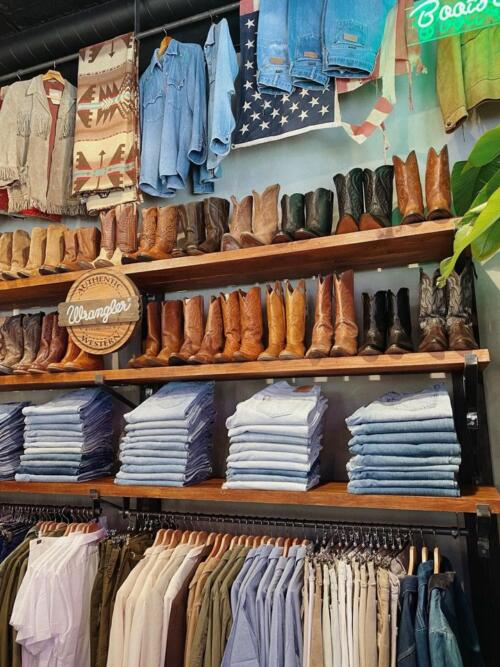
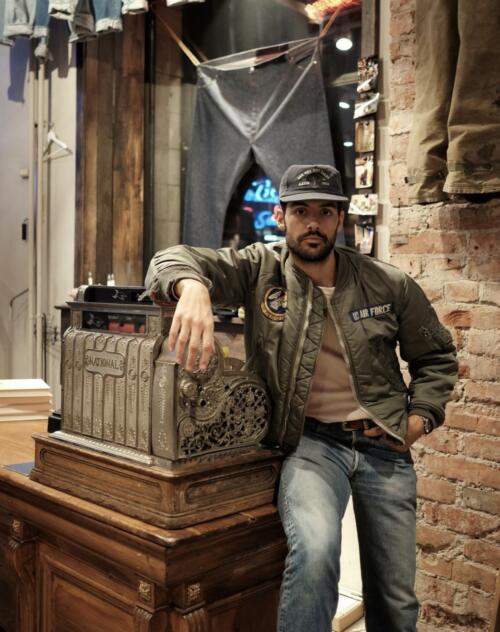
Thirty or forty years ago, much of this supply came from American factories – they might have dozens of old bales sitting in the back that no one wanted. “Those days are gone,” says Nathaniel (above). “We still have a few we keep in the warehouse, just because we don’t need them yet, but there’s very little like that out there now.”
That warehouse in Gothenburg, however, has an archive in the tens of thousands. The way the company works now, Noam might tell his Dad he needs varsity jackets in Stockholm. David goes into the warehouse (below), finds what there is, sorts it and checks it and cleans it, and then sends a selection to the shop. There’s no problem with finding stuff just to have something to sell.
Interestingly, this makes Broadway more seasonal than some vintage stores. When I visited it was summer, so there was virtually no heavy outerwear – instead a rail dedicated to short-sleeved guayabera shirts, some lightweight golf jackets, quite a few band T-shirts.
Downstairs, in the basement/office, there were racks of pea coats, parkas and down jackets. Nathaniel was at his desk down there, Noam sorting through a heavily sellotaped package. These jackets and coats will come out later, as the season turns and Stockholm gets (very) cold.
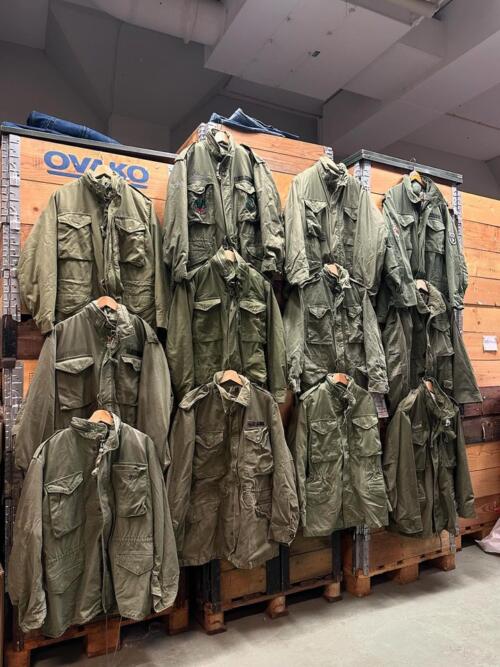
This supply might be one reason Broadway has also remained relatively cheap, not becoming expensive and precious like some other stores. It might mean every piece isn’t quite as high-end, but it’s rather more accessible.
“I also like selling stuff, I like it going out the door,” says David, standing now in the middle of the store, customers milling around him. “We could put prices up, but there would be fewer people in here, and maybe things would feel less important.”
For a customer like me, it makes it easier to take a risk. I ended up buying a pair of orange-tab Levi’s that I might not otherwise have considered, as they were only £50. Equally a pale-yellow Harrington, which won’t get much use at this end of the summer, but will be a great thing to have next spring.
The disadvantage of this seasonal approach is that you can’t shop for everything if you’re an occasional visitor. But I did get a peek downstairs, and I’m sure I’ll be back at some point. I only had a couple of hours away from the family, on what was definitely not meant to be a work trip. But I think I did a decent job of convincing everyone that Sweden would be a good place to come back to.
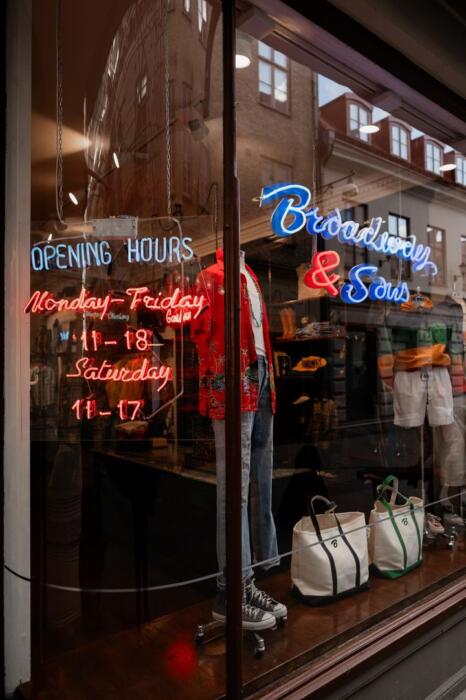
Many thanks to David, Nathaniel and Noam for their time and hospitality. It will always be sunny outside the shop in my memory.
The Broadway & Sons website has only a very small selection of what’s in the stores, but it’s worth keeping an eye one – the newsletter with staff highlights is worth signing up to too.
Nathaniel is also the founder of the brand Casatlantic, which we have covered a little on Permanent Style here.
www.broadwayandsons.com

